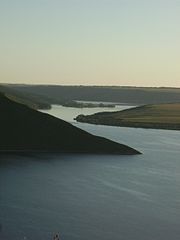Promoting Key Concepts in Water Conservation
You may have noticed our series of posts we call “Take a Cool Guess,” in which we offer one-question quizzes on cleantech trivia. I hope you’ve had fun with them; I know I have.
In a recent “Take a Cool Guess” post I mentioned Falcon Waterless, a new client for whom my team and I will be doing a bit of content creation. Those of you following this now know that the amount of clean drinking water (an increasingly rare and precious commodity) flushed down the average urinal in the United States is no less than 40,000 gallons per year.
I had a meeting at Falcon’s marketing agency’s office this morning, and, at the risk of appearing too excited, I told them, “Wow, I’m so glad to have run into you folks. In a world so full of garbage and lies, what are the odds of coming across a product that offers its customers and the world at large so many benefits?”
Seriously. It’s the ultimate no-brainer: a solution for designers of commercial and industrial buildings that conserves water, reduces costs, and creates a better smelling and more hygienic men’s room. And I get paid to tell the story? It would have been hard to start the day with a better experience.


I conserve water. In a couple weeks, I’m having plants put into my back yard. I just finished installing the drip irrigation system for them. It will work very efficiently and use no more water than necessary to keep the plants healthy. Also, I have no grass; grass, in addition to requiring too much time and attention, requires too much water. According to information on my water bill, I am using only a fraction as much water as the average house here, and probably the additional water required by the new plants won’t increase the usage by very much.
But even with water conservation, many parts of the world still require more water. That can be provided only by desalinating sea water, which will greatly increase global energy requirements. The increased energy requirements cannot be achieved without nuclear power.
For a safer source of nuclear energy, I highly recommend reading the book “Super Fuel: Thorium, the Green Energy Source for the Future” by Richard Martin; it’s available from numerous sources. In addition to explaining thorium reactor technology, he explains the history that has caused us to use a very problematic uranium technology instead of thorium.